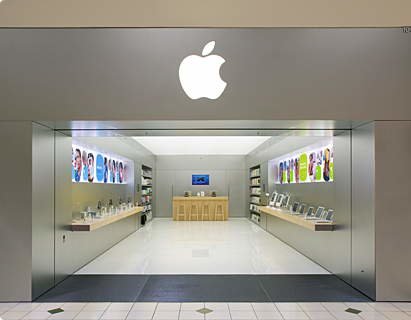
Image: Apple
Steven Cook

Steven Cook is former Samsung Electronics SVP, CMO, North America; former PG and Coca-Cola global brand marketer, and CMO Council Advisory Board Member.
Recent Posts
Jim Rogers

Jim Rogers is Vice President of Marketing at Neustar, Mobile Registry Services.
Recent Posts
While it was once merely difficult to communicate the attributes of a brand, our media-saturated world today makes it far more challenging. There are so many forms of media available to each consumer; so many channels through which information is relayed that traditionally short attention spans have shrunk to minuscule lengths.
That’s why brands that have achieved instantly recognizable, even iconic, status deserve respect. Think Disney, McDonald’s, Honda—each is global, ubiquitous and evocative of specific characteristics. A few climb even higher, potentially reaching the status that consultant Olivier Blanchard refers to as “love brands”—basically, companies or products people literally fall in love with. He cites graphic designers who “love” their Apple computers, or car enthusiasts who “love” their BMW. It’s visceral, of course, but it’s easy to see how some bikers “love” their Harley-Davidson, or guitarists “love” their Fender Stratocaster.
This isn’t a magic potion we can bottle and then dab on the product of our choice. Still, there’s no question this kind of brand affinity doesn’t emerge without a clear combination of connectivity and engagement. In this context, one intriguing avenue is the shift in Top-Level Domains (TLDs) proposed by ICANN, the non-profit organization that regulates domain names on the Internet. In essence, the new proposal enables entities to propose what goes on the right side of the dot, and then determine what goes on the left. For branding purposes, this is a very big deal.
Given the plethora of channels now available, online marketing is a critical component of every go-to-market campaign. However, this is a field that’s littered with casualties. First, the necessity of the .com tag (especially in the U.S.), the entry point for much of the Internet, automatically dilutes the impact of every brand. No matter how catchy your domain name is, anything ending with .com is just that: another “.com.” The fact that we instinctively think of this suffix is a sign of just how hard it is to stand out by using it. Moreover, the search function is severely hampered by lacking context. This block is one reason why many online marketing budgets—up to a third, by some estimates—are allocated to campaigns that are fundamentally separated from the main site. It’s safe to say that on a macro level, a lot of money gets wasted. Having the right side of the dot goes a long way toward clearing this hurdle. By dispensing with the suffix, every site address shines bright with the company’s main brand.
At the same time, having the left side of the dot free opens up new avenues for going past engagement to create a connection with the customer. For example, what if select customers were permitted to use their favorite brand as part of their online identity? Say you’re a big fan of a certain coffee brand and support it more than most. Your own site could be myname.coffeebrand, and you could get an e-mail like [email protected]. The company creates a unique level of affinity with you, and advertises itself each time you send out an e-mail—an entirely new marketing channel.
Some companies will surely choose to stay practical in this area—think camera.canon or TV.Hitachi.
It may surprise some, but most online marketing techniques that are routine today didn’t exist before the channels themselves emerged. For example, Old Spice was an aging brand that got revived by a fun TV campaign, but it acquired viral video status only through creative use of social media channels, from Twitter and YouTube to Facebook, Reddit and Digg. The online campaign registered 23 million views and some serious love in only three days, but it could not have existed, let alone thrived, without new technology-enabled options.
Every brand that’s built a “love” connection (and the success that comes with it) unquestionably did so by charting its own path, using every channel it could, frequently over considerable skepticism and steep obstacles. Apple released products that received ecstatic reviews yet struggled to find a mass audience, but the company stayed true to its brand and now has more intrinsic and shareholder value than any other company.
Having a brand Top-Level Domain won’t guarantee love. However, it’s much easier to “like” someone when the first “date” (or online contact) goes well. And who knows what might happen after that.
Article source: SAI http://feedproxy.google.com/~r/typepad/alleyinsider/silicon_alley_insider/~3/HPWWTsxry60/top-level-domain-brand-2011-10